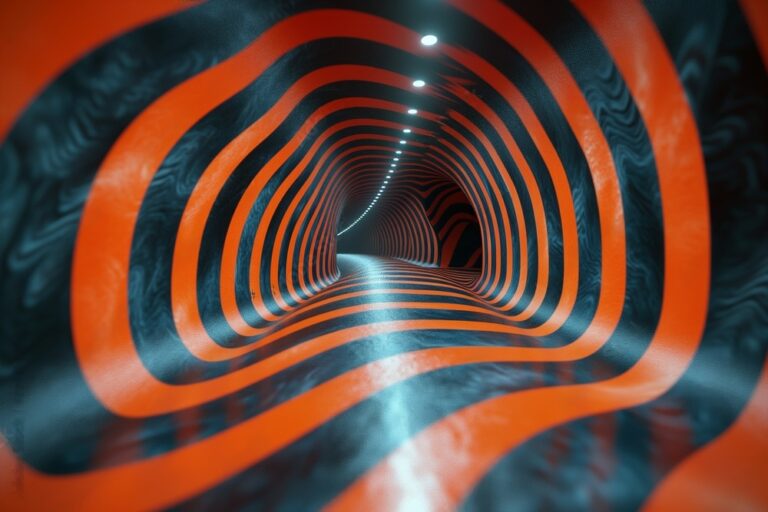Engineering Illusions: Magic Behind Optical Tricks, Holograms, and Virtual Reality

In a world where seeing is believing, engineers wield their mastery over light and perception to craft illusions that defy reality itself. From optical trickery to holographic marvels and immersive virtual experiences, the science of illusion intersects with cutting-edge engineering to create captivating visual spectacles. Prepare to have your mind expanded and your senses challenged as we unveil the secrets behind engineering the extraordinary.
Understanding Human Perception
Picture this: your brain is like the ultimate circus ringmaster, juggling signals from your eyes, ears, and other senses to create the grand illusion we call reality. But here’s the twist – sometimes, it gets a little carried away and starts seeing things that aren’t really there. And that’s where engineers step in, armed with their bag of tricks to mess with our minds in the most delightful ways possible.
Optical Illusions: The Art of Fooling the Eye
Now, who doesn’t love a good optical illusion? You know, those mind-bending pictures that make you question everything you thought you knew about shapes and colors? Engineers are the ultimate pranksters when it comes to these visual tricks. They use all sorts of sneaky techniques – like tweaking colors, playing with shadows, and throwing in some funky shapes – to make our brains go, “Wait, what just happened?” It’s like they’re playing a game of “Gotcha!” with our senses, and we can’t help but fall for it every time.
Let’s explore some classic optical illusions in more detail. The Müller-Lyer illusion, for example, tricks our brains into perceiving lines of equal length as different due to the addition of arrow-like tails. Meanwhile, the Ponzo illusion plays with depth perception by using converging lines to make objects appear larger or smaller than they actually are. Engineers study these illusions to understand the intricacies of human perception better, allowing them to create even more mind-bending visual experiences.
Engineering Holography: Bringing 3D to Life
Next up, let’s talk about holograms – those futuristic images that seem to leap right out of the screen and into our laps. Imagine capturing the essence of an object in a three-dimensional image – that’s the magic of holography. Engineers pull off this wizardry using lasers, mirrors, and a sprinkle of fairy dust (okay, maybe just some really fancy technology). They create these jaw-dropping illusions that make us feel like we’re living in a sci-fi movie. It’s like they’re saying, “Who needs 3D glasses when you can have your own personal holographic experience?”
But how do engineers actually create holograms? Let’s delve a bit deeper into the process. Holography relies on the principles of interference and diffraction, where coherent light waves interact to form intricate interference patterns. These patterns are captured on a photosensitive medium, preserving the spatial information of the object being holographed. When illuminated with laser light, the hologram reconstructs the object in three dimensions, creating a stunningly lifelike illusion. It’s engineering at its most magical!
Virtual Reality: When Reality Gets Boring
And finally, we have virtual reality – the ultimate escape hatch from the mundane realities of everyday life. Engineers whisk us away on thrilling adventures, from exploring distant planets to battling mythical creatures in enchanted realms. They strap us into headsets, bombard our senses with dazzling visuals and sounds, and suddenly, we’re surfing on the edge of reality and fantasy. It’s like they’re saying, “Why settle for ordinary when you can dive headfirst into the extraordinary?”
But what goes on behind the scenes to make virtual reality experiences possible? Let’s take a peek under the hood. Virtual reality systems consist of sophisticated hardware and software components designed to create immersive digital environments. High-resolution displays, motion-tracking sensors, and spatial audio systems work in harmony to transport users to virtual worlds that feel astonishingly real. Engineers meticulously calibrate these systems to match real-world physics and perceptual cues, ensuring a seamless and captivating experience. It’s like stepping into a whole new dimension – all thanks to the wizardry of engineering!
The Role of Engineers: Making Dreams Come True
Behind every great illusion is an engineer with a twinkle in their eye and a knack for turning dreams into reality. They’re the masterminds behind the curtain, pulling the strings and orchestrating the show. With their mad skills and a touch of magic, they create experiences that leave us spellbound and craving for more. So here’s to the engineers – the real magicians of the modern age! Keep dazzling us with your tricks, and we’ll keep believing in the magic.
Ethical Considerations: Keeping It Real – Kinda
But hold on a second, let’s not get too carried away with all this illusionary fun. As much as we love a good mind-bender, we also need to remember the importance of ethics. Sure, engineering illusions is a blast, but we gotta make sure we’re not messing with people’s heads too much. It’s all fun and games until someone starts questioning their own sanity, right? So, engineers, let’s keep it real – well, kinda.
Let’s delve into some ethical considerations that engineers must grapple with when creating illusions. For instance, ensuring that virtual reality experiences are designed with user safety and well-being in mind is paramount.
Engineers must also consider issues of consent and privacy, particularly when it comes to collecting and using personal data in immersive technologies.
By adhering to ethical guidelines and putting user welfare first, engineers can continue to push the boundaries of illusionary experiences responsibly and ethically.
Conclusion
And there you have it! From optical tricks to holographic marvels and virtual escapades, engineers are the true wizards of the modern era. But hey, who said magic had to be all serious and stuffy? As long as we keep it ethical and remember to bring a sense of wonder along for the ride, there’s no limit to the illusions we can create. So, here’s to the engineers – the ultimate architects of awe and wonder! Keep dazzling us with your tricks, and we’ll keep believing in the magic. Cheers to the mind-bending adventures that lie ahead!
